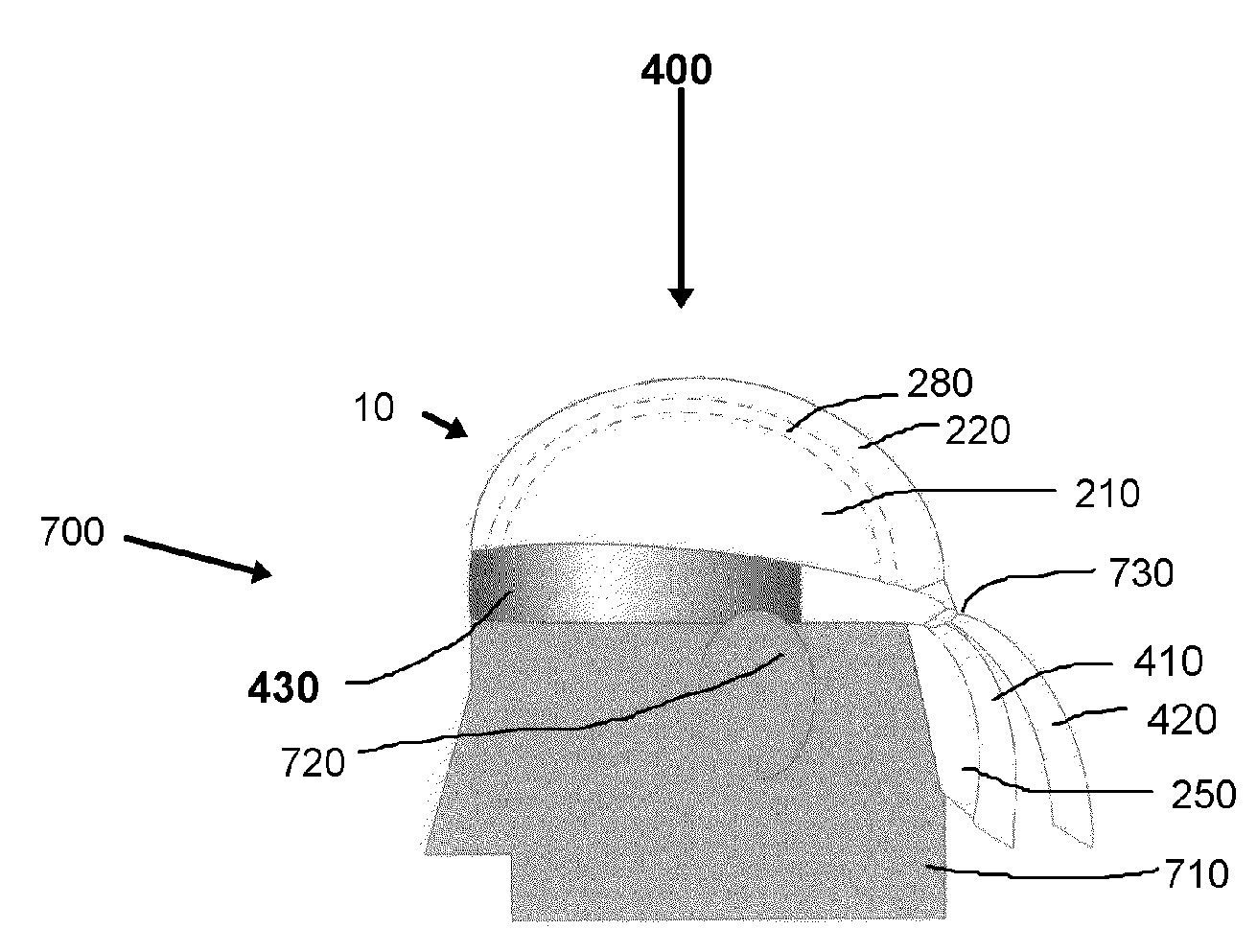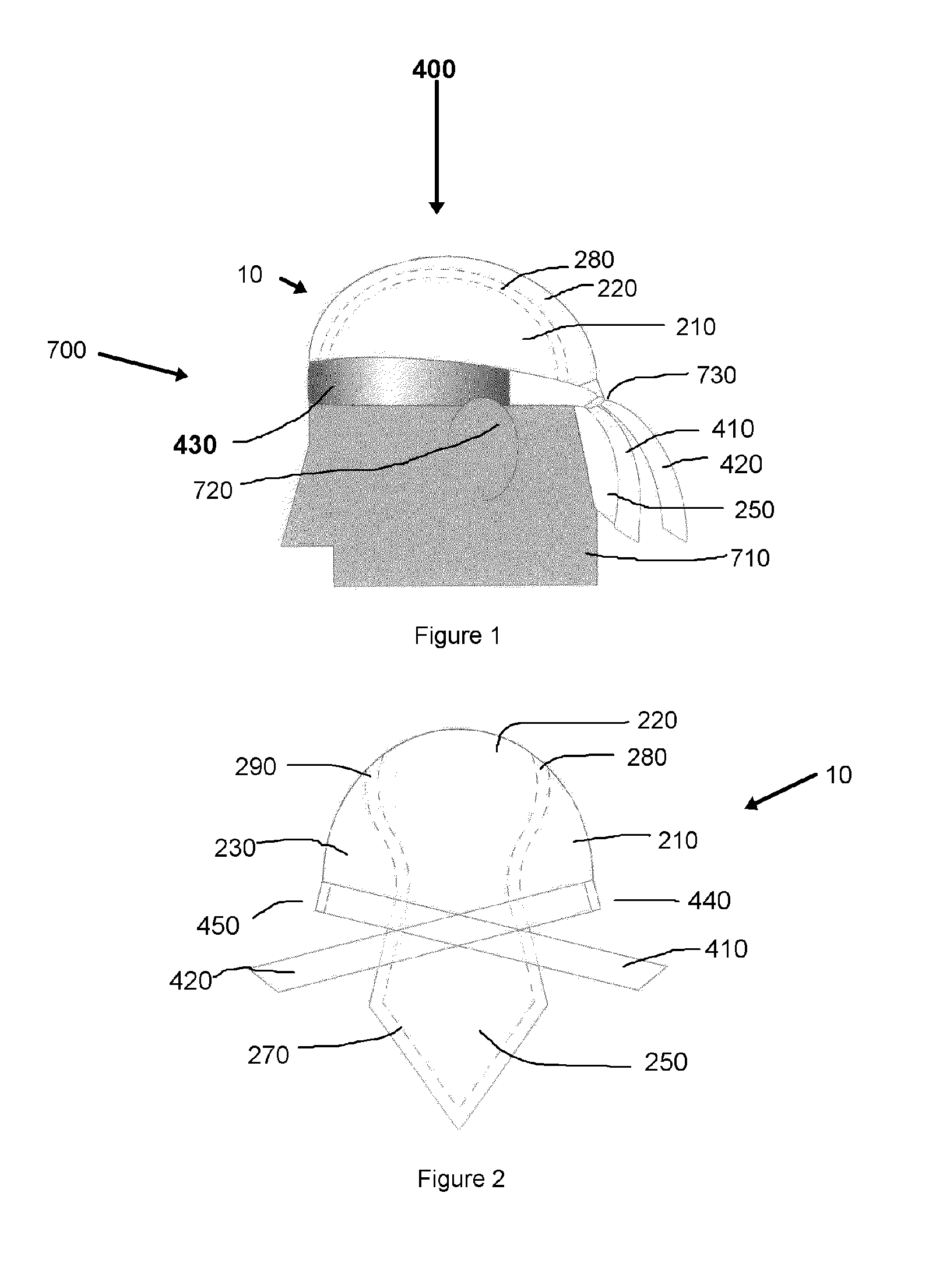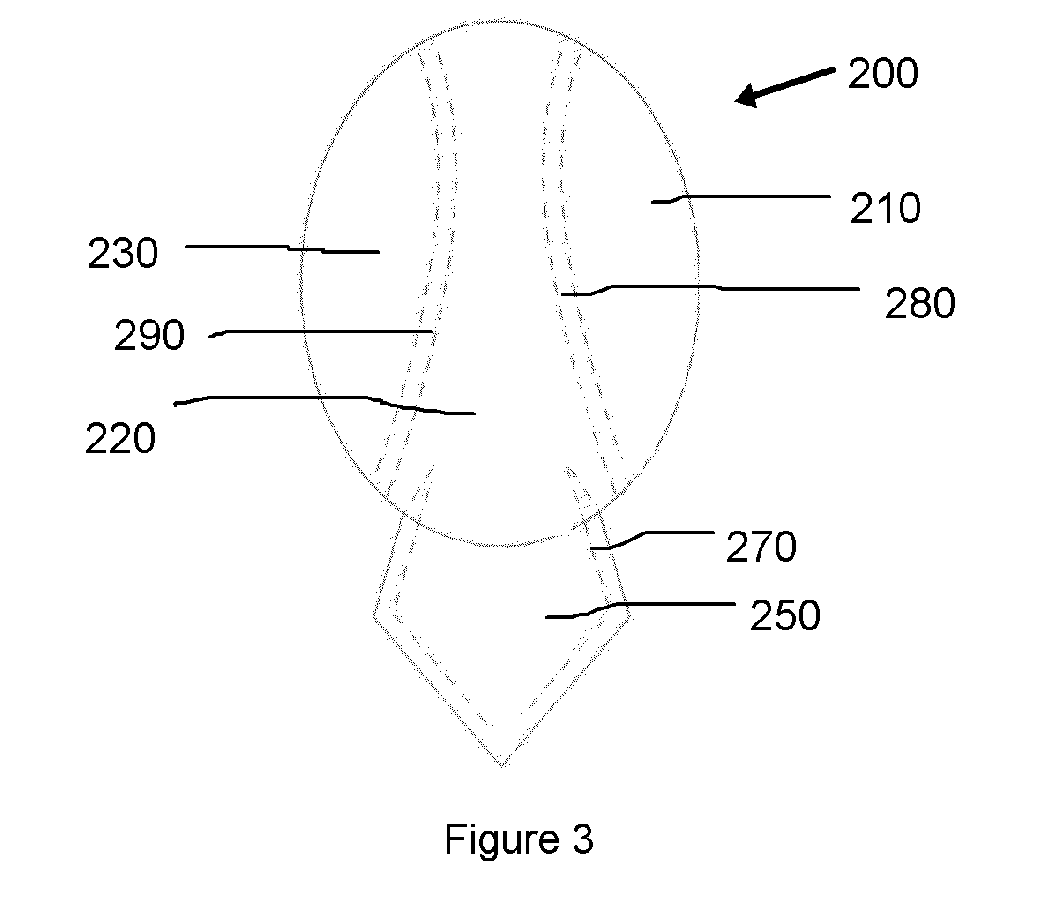Protective headgear
a protective head and headband technology, applied in the field of protective headbands, can solve the problems of many do-rags flying off the user's head, easy to fall off, and be lost forever on the open highway, and achieve the effect of tighter and much more secure initial fit, less wind pressure, and tighter initial fi
- Summary
- Abstract
- Description
- Claims
- Application Information
AI Technical Summary
Benefits of technology
Problems solved by technology
Method used
Image
Examples
Embodiment Construction
)
[0020]The present invention is designed to stay on the head of the user, while providing a stylish, tight fit. The present invention protects the wearer's head, hair, and the back of the neck from the harmful effects of the sun, as well as from dust and other airborne contaminates. Additionally, when the covering is made of a material such as cotton, it affords the quicker evaporation of sweat. The design of the present invention provides a stylish fit that appears to the observer of the user to be a standard do-rag, yet has many features that provide a tighter and more secure fit.
[0021]In FIG. 1, a side view of the preferred embodiment of the present invention (10) is shown on the head (700) of a user, and in FIG. 2 a rear view of the present invention (10) is shown. The preferred embodiment of the present invention has two main parts: the body (200) shown in FIG. 3, and a band (400) shown in FIG. 4 that fits into a hem (300) of the body (200). The body (200) is designed to tightl...
PUM
 Login to View More
Login to View More Abstract
Description
Claims
Application Information
 Login to View More
Login to View More - R&D
- Intellectual Property
- Life Sciences
- Materials
- Tech Scout
- Unparalleled Data Quality
- Higher Quality Content
- 60% Fewer Hallucinations
Browse by: Latest US Patents, China's latest patents, Technical Efficacy Thesaurus, Application Domain, Technology Topic, Popular Technical Reports.
© 2025 PatSnap. All rights reserved.Legal|Privacy policy|Modern Slavery Act Transparency Statement|Sitemap|About US| Contact US: help@patsnap.com



